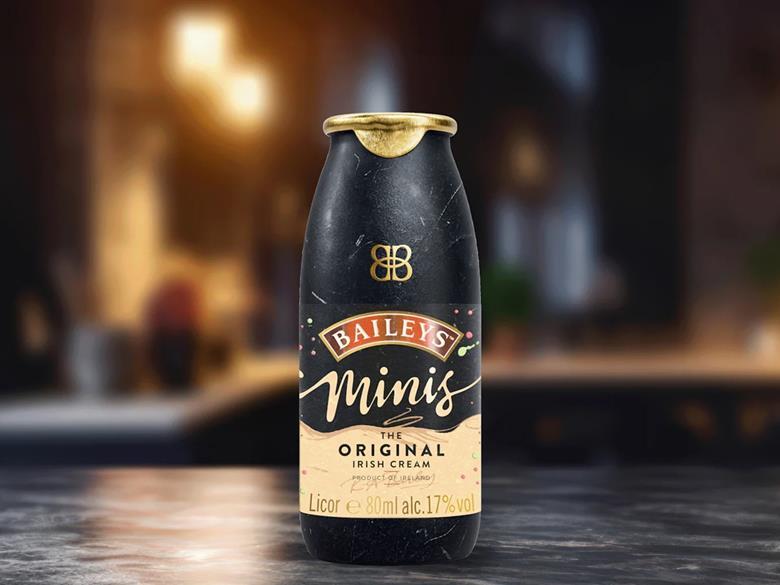
Could you start by giving us a general overview of this latest piece of news?
Diageo, the global leader in premium drinks, has partnered with PA Consulting (PA), the global innovation consultancy, and PulPac, the Swedish packaging solutions company, to trial paper-based Dry Molded Fiber packaging for Baileys, the Original Irish Cream Liqueur.
The bottles were released in a market trial at the Time Out Festival in Barcelona from 25-26 May 2024. This marks Diageo’s first consumer-facing trial with paper-based bottles, and a world-first for placing this ground-breaking packaging in the hands of consumers.
The Baileys bottles were produced at PA’s Global Innovation and Technology Centre in Cambridge using PulPac’s Dry Molded Fiber technology: an affordable and scalable alternative single-use plastics, aluminium, and other materials. The packaging is made from plant-based fibers, and uses minimal water in the production process, making it both cost and energy-efficient, as well as recyclable.
The news is a success story of PA and PulPac’s Bottle and Blister Pack Collectives, which bring together world-leading food, drink, pharma, consumer health, and packaging businesses, including Diageo, Sanofi, Haleon, Bayer, and Logoplaste. By pooling efforts and resources, we are collectively accelerating progress and working to reduce single-use plastic bottles and blister packs on a global scale.
Why is Diageo experimenting with this format – how does it fit into the company’s wider sustainability strategy?
When it comes to our packaging, we’re taking an approach of progress over perfection, knowing our packaging will need to evolve along with consumer needs and technological advancements. The consumer is becoming more sustainability savvy and we believe we can meet that need using our design and innovation to bring premium products and more sustainable solutions together. We’re looking for more opportunities to reduce our carbon footprint whilst offering more sustainable and luxury packaging opportunities to our consumers.
Could you let us know about the construction of the bottle? What specific materials are the different layers made from, and how is it recycled?
The bottles are made from 90% fluff pulp, which is made from plant-based fibers and acts as the ‘paper’ bottle structure. Within that, a thin PET liner forms approximately 9% of the bottles. This does the job of the product barrier and prevents the liquid from interacting with the external layers. There is also a +-1% foil seal, and other little decorative elements on the bottles.
The bottle is designed for recycling in standard paper streams and does not require the consumer to separate the plastic liner from the paper bottle when disposing.
Whenever we share news regarding paper bottles like this, some of our readers characterise these solutions as plastic bottles with paper sleeves. How would you respond to this?
What is unique about these bottles is that they are made from Dry Molded Fiber technology. If you were to open these bottles and take out the plastic liner, you would see that it is so thin that it doesn’t actually hold its own structure and would be unable to stand on a shelf.
The liner only acts as a very thin barrier, and is more akin to a fine bag blown into the paper bottle, which can still be disposed of in normal paper recycling streams. The outer Dry Molded Fiber packaging is what gives the bottles a structure, decoration and branding, and has huge potential as an energy-efficient, recyclable, scalable alternative to many single-use materials.
What is the carbon footprint of this solution, how was this determined, and how does it compare to the carbon footprint of conventional solutions like glass and PET bottles?
Initial external Life cycle assessments (LCAs) show that the overall carbon footprint of this packaging is lower than that of PET and rPET. These LCA’s showed that the total CO2 equivalent emissions from one of these packs are 50% lower than those of virgin PET and more than 25% lower than recycled PET (rPET) of equivalent pack sizes. We will conduct further external LCAs following this test to confirm the savings, prior to any scaled versions.
What does the future hold for this specific project? We see plenty of paper bottle trials, but not so many commercial launches – what will it take for this trial to get a commercial launch? What does success look like here?
The purpose of the Baileys market trial was to collect consumer feedback and to test how the bottle travels. This was the first time we had real consumers experience our packs in the market, and those learnings will be invaluable.
Over the course of 2024 and into 2025, other tests will occur with PA’s brand members who are part of the Bottle and Blister Pack Collectives. While those tests happen, the PA team are busy working on the next scale-up machine with a view to holding the first commercial market launches as early as late 2025 or early 2026.
Our technology is built to be more sustainable, scalable and cost-effective compared to the commodity materials it is looking to replace, and we have high hopes for its future commercial rollout. Through our Bottle and Blister Pack Collectives, there are also opportunities for other brands to join us in developing exclusive sustainable packaging lines.



